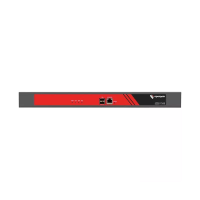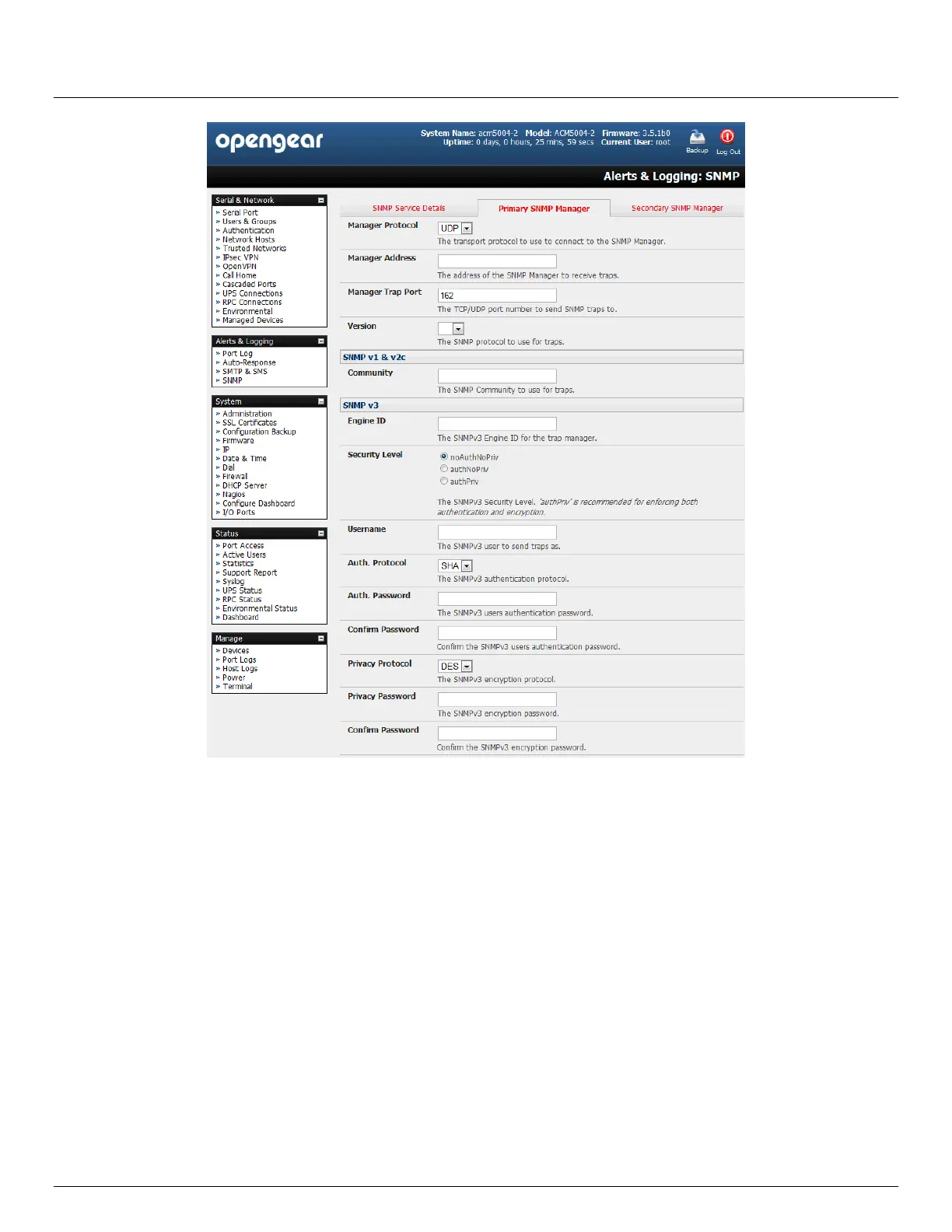User Manual
Advanced Console Server & RIM Gateway User Manual 163
Select the Manager Protocol. SNMP is generally a UDP-based protocol though infrequently it uses TCP instead.
Enter the host address of the SNMP Network Manager into the Manager Address field.
Enter the TCP/IP port number into the Manager Trap Port field (default =162).
Select the Version to be used. The console server SNMP agent supports SNMP v1, v2 and v3
Enter the Community name for SNMP v1 or SNMP v2c. At a minimum, a community needs to be set for either SNMP
v1 or v2c traps to work. An SNMP community is the group to which devices and management stations running SNMP
belong. It helps define where information is sent. SNMP default communities are private for Write and public for
Read.
Configure SNMP v3 if required. For SNMP v3 messages, the user’s details and security level must match what the
receiving SNMP Network Manager is expecting. SNMP v3 mandates that the message will be rejected unless the
SNMPv3 user sending the trap already exists in the user database on the SNMP Manager. The user database in a
SNMP v3 application is actually referenced by a combination of the Username and the Engine ID for the given SNMP
application you are talking to.
o Enter the Engine ID for the user sending messages as a hex number e.g. 0x8000000001020304.
o Specify the Security Level. The level of security has to be compatible with the settings of the remote SNMP
Network Manager.

